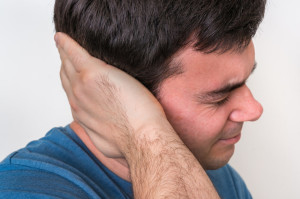How Chiropractors Can Help With Persistent Postural-Perceptual Dizziness
 PPPD (Persistent Postural-Perceptual Dizziness) is a recently defined diagnostic syndrome unifying key features of CSD (chronic subjective dizziness), PPV (phobic postural vertigo) plus related disorders. It’s used to describe a commonly encountered chronic dysfunction of the brain and vestibular system that produces non-spinning vertigo, persistent dizziness, or/and unsteadiness.
PPPD (Persistent Postural-Perceptual Dizziness) is a recently defined diagnostic syndrome unifying key features of CSD (chronic subjective dizziness), PPV (phobic postural vertigo) plus related disorders. It’s used to describe a commonly encountered chronic dysfunction of the brain and vestibular system that produces non-spinning vertigo, persistent dizziness, or/and unsteadiness.
This disorder constitutes a maladaptation that’s long-term to a psychological, medical or neuro-otological event that triggered symptoms of vestibular, and it’s usefully considered within other functional neurological disorders’ spectrum. While conventional imaging and diagnostic tests often remain negative, people with this disorder present in a characteristic manner that maps onto the criteria of positive diagnostic.
International Classification of Disease to List the Disorder
Persistent Postural-Perceptual Dizziness is going to be listed in the forthcoming ICD-11 (International Classification of Disease). International Classification of Disease is a medical coding system; the coding is created by WHO (World Health Organization). The coding was created for documenting the following:
• Diseases
• Diagnoses
• Signs and symptoms
• Social circumstances
It’s Just in Your Head
Before Persistent Postural-Perceptual Dizziness listing patients were told that their problem was mainly in their mind: a psychological or psychiatric problem underlying their dizziness. Nowadays, chiropractors can achieve better results for their patients. This is a relief for people suffering from the disorder; they usually feel guilty for having the problem because of its “psychogenic” label.
The options for treatment for a psychogenic diagnosis are often limited, with the exception of psychogenic drug therapy, which many patients are not willing to take. There haven’t been any objective tests for physiological or anatomical “abnormalities”. People with this disorder have normal values when it comes to clinical balance tests. Typically, if there’s nothing wrong found in you, then it has to be in your head.
Mismatch Between Expectation and Perception
PPPD is known to be among the most common disorder that causes chronic dizziness in patients who are middle-aged. The chronic dizziness impacts your activities of daily living plus functionality. Persistent Postural-Perceptual Dizziness is based on Phobic Postural Vertigo clinical condition. In concept, that’s a neural mismatch or derangement in your sensorimotor function.
There is a mismatch between both perception and expectation. That means the sensory inputs perceiving your environment and your pattern of expectation: your balance. Therefore, your perception of body sway or head motion is inaccurate, which causes that sensation of feeling off balance.
Persistent Postural-Perceptual Dizziness Symptoms
The common symptoms of Persistent Postural-Perceptual Dizziness include the following:
• Experience of benign dizziness caused by movement in their environment, which worsens in an upright position.
• Vertigo that’s present most of the times for a period of three months or more.
• Dizziness, non-spinning, unsteadiness.
The symptoms tend to begin soon after an event that leads to acute vertigo, that is:
• Mild traumatic brain injury (whiplash/concussion)
• Panic attack with dizziness
• Vestibular migraine
• Central or peripheral vestibular disorder
If you are suffering from any of these symptoms, you should contact Neuroworks. Our chiropractors have a special interest in neurology area, they would be glad to help you put your mind at ease, steering you down your path of recovery. Once recognised, our chiropractors can help you manage Persistent Postural-Perceptual Dizziness with effective communication plus tailored treatment strategies, including cognitive-behavioural therapy, serotonergic medications and vestibular rehabilitation (specialised physical therapy).

